Menu
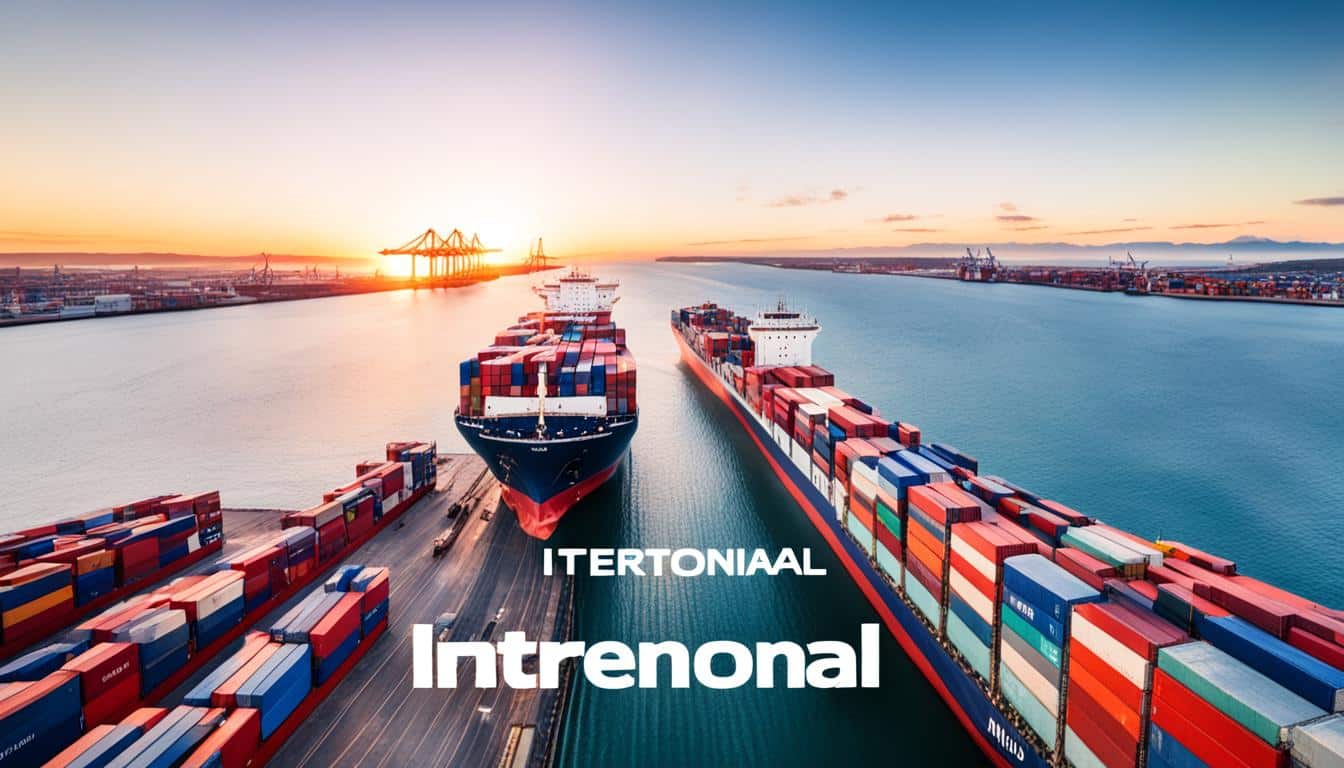
Do you know that trade between Morocco and the United States has doubled thanks to the Free Trade Agreement (FTA)? This shows how engaging in global trade can change things for the better. For companies looking to grow and expand, tapping into international trade markets can offer huge benefits.
To make the most of these opportunities, one must do their homework. This includes doing a lot of market research and building strong alliances. Doing so greatly increases your chances of success abroad.
It’s crucial to adjust your products and marketing to meet the needs of global consumers. By using technology and innovation, businesses can stand out. They can use digital data to understand trends and reach their audience effectively. This might mean using social media or improving their search engine presence.
Exploring global markets requires thorough market research. By looking at the economy, culture, and laws, businesses can make smart choices. They use this info to pick the best ways to enter a market.
Analysing economic indicators looks at things like GDP, inflation, and jobs to check a market’s health. You can use this to see which countries buy which products most. This helps see where there’s a growing need. Looking at U.S. exports alongside imports shows what U.S. products are popular abroad.
Getting cultural and consumer behaviour insights right is key to success. By using official data and industry reports, you learn about people’s income and what they make. Trends in population, industries, and how people spend their money help target markets better.
Sticking to international market regulatory compliance is a must to avoid legal trouble. You need to know about a market’s rules and what you have to do to follow them. It’s important to also look at trade deals, barriers, and how business is done there. Knowing all this helps reduce risks and makes moving into new markets easier.
A strong market research process includes looking at the economy, culture, and laws. Doing this prepares a business for successful global expansion.
Creating strategic partnerships is key for businesses wanting to enter new markets. These partnerships, especially with local partners, offer insights and networks. They help understand local business landscapes and deal with cultural and regulatory issues.
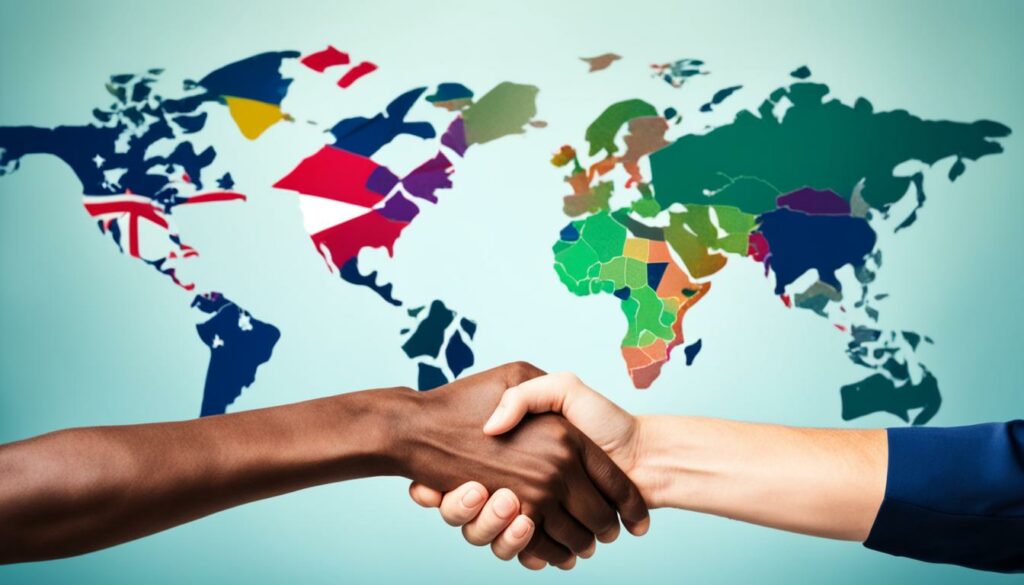
Working with local distributors and suppliers is smart to enter new markets fast. It lets you benefit in many ways:
Industry groups are key to forming important partnerships and entering markets better. They help businesses in various ways:
To sum up, forming strong partnerships, especially with locals and industry groups, is crucial for market success. These relationships provide the right insights, trust, and cut costs. They are vital for thriving in new markets.
Companies must change their products to fit what people in different countries expect and need. They do this by adjusting many things. This includes how the product looks, the price, and even the name, to match local tastes and customs.
Products for global customers often look different. For example, to sell well in India, P&G changed Tide’s formula to a cheaper one. Also, in places where money is tight, like in many developing countries, small sachets of shampoo are common.
Nokia, for instance, gets local designers to make mobile phones for each market. This way, the product isn’t just right for locals; it also shows that Nokia cares about the country and its people.
Changing the price is key, too. Companies adjust prices to fit how much money people have. P&G created cheap diapers for some countries to match their economy.
Branding is important worldwide. Where a product is made can change how people see it. Getting this right helps build a brand everyone trusts. Ford learned this lesson when a car they designed didn’t match Indian needs well.
| Strategy Option | Example | Benefit |
|---|---|---|
| Straight Product Extension | – | Minimal modification; cost-effective |
| Product Adaptation | P&G Tide in India | Caters to local preferences; increases market share |
| Product Invention | P&G diapers for BRIC | Addresses specific market needs; creates new demand |
| Reverse Innovation | GE Portable ECG Machine | Opens new markets; introduces innovations globally |
Reverse innovation means sometimes creating something new for the developing world first, then bringing it to developed countries. GE Healthcare’s portable ECG is a great example. It was made for countries with fewer resources but then became popular in wealthier nations, too.
In summary, to do well in foreign markets, companies must adjust products, prices, and how they’re known. This helps them fit in and build a strong business around the world.
In today’s connected world, strong marketing is key to succeed globally. Using social media and SEO helps companies connect with people worldwide. It’s predicted that global retail sales will hit 31.7 trillion dollars in 2025. This shows the huge opportunity for businesses to grow beyond borders with the right strategies.
Marketing now leans heavily on social media. Top brands, like PopSockets, win by using pages that suit different countries. This approach really speaks to locals. Platforms such as Facebook, Instagram, and Twitter make it easier to share your brand across the world.

SEO is just as important. It boosts your visibility online and draws in natural visitors. Focus on key terms like marketing strategies international trade in your website and blog content. This gets you noticed by search engines and potential customers.
Ads made for local tastes can really strike a chord. Big names like McDonald’s and KFC do this well. They market in ways that feel personal to the area, making their messages clearer to their audience. Knowing local languages is critical here, as most people prefer information in their mother tongue. It helps tailor your ads effectively.
Being aware of different cultures is crucial for entering new markets. Adapting your campaigns to fit local customs avoids bad reactions and builds trust. Apple is a great example, tweaking their content to suit various cultures. This shows respect and makes their marketing more effective.
| Brand | Strategy | Outcome |
|---|---|---|
| Nike | Advanced global marketing techniques | Global revenue exceeds competitors |
| KFC | Localised menu offerings | Presence in 145 countries |
| Apple | Customised content and marketing | High brand loyalty |
To sum up, success in international marketing leans on social media, local ads, and cultural savvy. When done right, this trio greatly boosts how your brand is seen and loved globally.
Today’s global economy needs businesses to embrace technology and innovation to succeed in international trade. E-commerce and data analytics have changed how companies work, offering major chances to improve. Technologies such as artificial intelligence and blockchain give smart companies an edge.
E-commerce sites like Amazon, Alibaba, and eBay connect people everywhere, helping businesses sell to a global audience. This has been especially good for small and medium-sized firms. Besides, tools for data analysis help companies understand market trends and customer needs. This knowledge makes companies able to react quickly and wisely in a fast-changing world.
Automation technologies, including robotics and artificial intelligence, have made inventory and logistics management much better. This means goods can be dispatched faster and more reliably. By cutting down on human mistakes and boosting warehouse processes, these technologies also improve efficiency.
Blockchain offers a way to make international trade more secure and trustworthy. It keeps records safe and unchangeable, which can lower the chances of fraud. It helps maintain an open view throughout the supply chain. Also, technology has simplified customs processes, making trading smoother and more straightforward.
In today’s world of international trade, having the right partnerships is key to facing rules and regulations. This is especially true for companies in tech and clean tech. They need to form close connections with others for things like OEM deals, licenses, and distribution.
Such partnerships are crucial for understanding and following local laws. They help in creating strategies to ensure the business meets the legal requirements. This can mean the difference between just surviving and actually thriving.
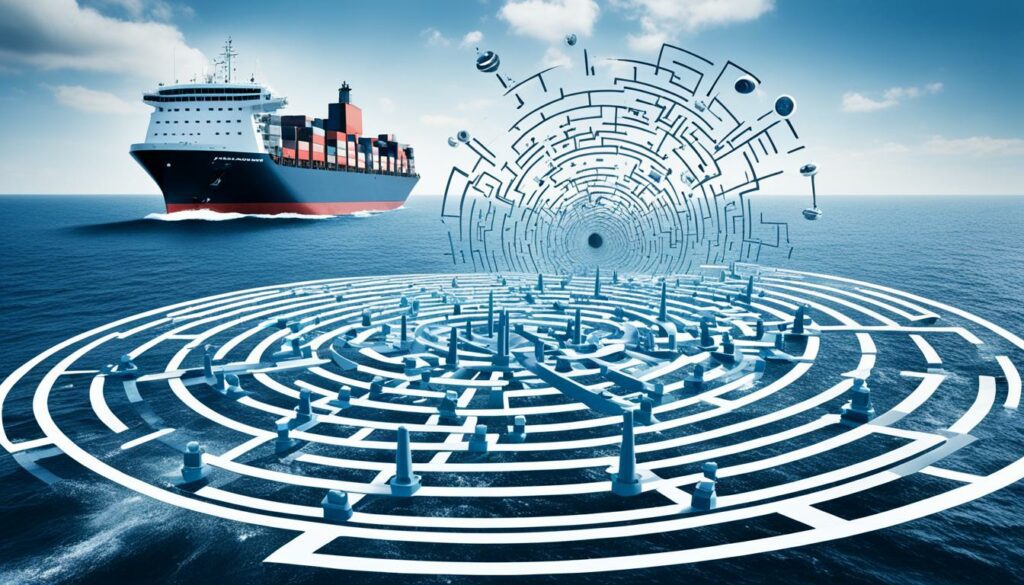
These business links offer a powerful way to deal with local laws and regulations. Working closely with local partners sheds light on the specific challenges of each area. It allows companies to spot and avoid potential legal problems early.
By doing this, they make sure they do not break any rules, leading to less risk. This way, they can better comply with the law and reduce chances of getting into legal trouble.
Creating strategic partnerships means looking at a few key things. Companies need to check if their goals and strengths match. They should work on being innovative together and have a good history of working as a team. Also, having clear leadership and communication is important.
All these things help in making strategies to obey rules. This is at both the local and international levels. By working together, companies can keep up with changing rules and quickly adjust to new requirements.
Using different kinds of partnerships helps companies follow the rules better. For example, when they partner up for tech licenses or in the supply chain, they can handle rules in many places easier. Larger partnerships and R&D projects can also speed up bringing new products to the market.
Working together to solve tough legal problems can expand a company’s market. It also pushes them to make products that meet specific legal needs. This joint effort drives innovation. It makes developing new products more efficient and improves how well companies operate. So, strategic partnerships are vital for growth and success in the global arena.
International trade is fuelled by quick access to trade resources. It lets countries swap goods, whether rare or common in their areas. These trades make the world’s economy stronger by using each country’s strengths and making things more stable through resource base diversification.
Diversifying resources helps countries deal with risk better and stay economically safe. If a country has more than one resource, it doesn’t suffer as much when prices in the world market change. This setup can also lower the damage if something disrupts the supply chain.
About 15% of the world’s resources are traded. This shows how vital having different resources is for making sure trade economies stay strong. Between 1980 and 2010, the value of traded goods went up six times. This jump clearly shows how much we depend on having many different types of resources.
By making it easier and smarter to share resources, we boost trade and help all countries involved. For example, countries with a lot of money are the biggest buyers of traded goods. Meanwhile, up-and-coming nations like China buy a lot too. This setup helps economies grow by letting each country focus on what it does best.
This approach helps increase GDP and job numbers. It also brings the world’s economy closer together.
| Economic Indicator | Value |
|---|---|
| U.S. International Trade Deficit (March 2024) | $69.4 billion |
| Volume of International Trade Growth (1980-2010) | Doubled |
| International Trade Value Increase (1980-2010) | Sixfold |
Today, fewer countries are earning more from trading than they’re spending. This shows the global market is more at risk. That’s why it’s so vital for countries to branch out their resources and trade fairly.
By using access to trade resources well, countries can make their economies stronger. They can grow together by smartly sharing their resources. This benefits everyone.
International trade powers economic growth and development. From 1990 to 2017, developing countries’ global exports grew to 30%. Simultaneously, the poverty rate dropped to 9%, helping 1 billion people escape poverty.
International trade boosts economies through specialisation and having a competitive edge. By excelling in specific sectors, nations enhance productivity. This way, they make more with less and advance economically.
This strategy also makes the global market more varied. For instance, developing countries now export mostly manufactured goods. This change grows their industries and reduces the risk of relying on few products.
Trade drives more than economic growth; it creates jobs and builds infrastructure. Extra demand leads to more production, which means more jobs. Now, developing countries fuel a third of world trade and create millions of jobs.
World trade has grown at twice the rate of overall production in the past 20 years. This trend pushes investments in better transport, ports, and facilities, making trade more efficient. The African Continental Free Trade Area aims to reduce extreme poverty by helping 50 million people by 2035 through enhancing trade infrastructure.
Still, trade conflicts and protectionism pose threats. If not addressed, they could increase poverty by millions by 2030. Therefore, maintaining a friendly global trade atmosphere is vital for economic growth benefits to continue.
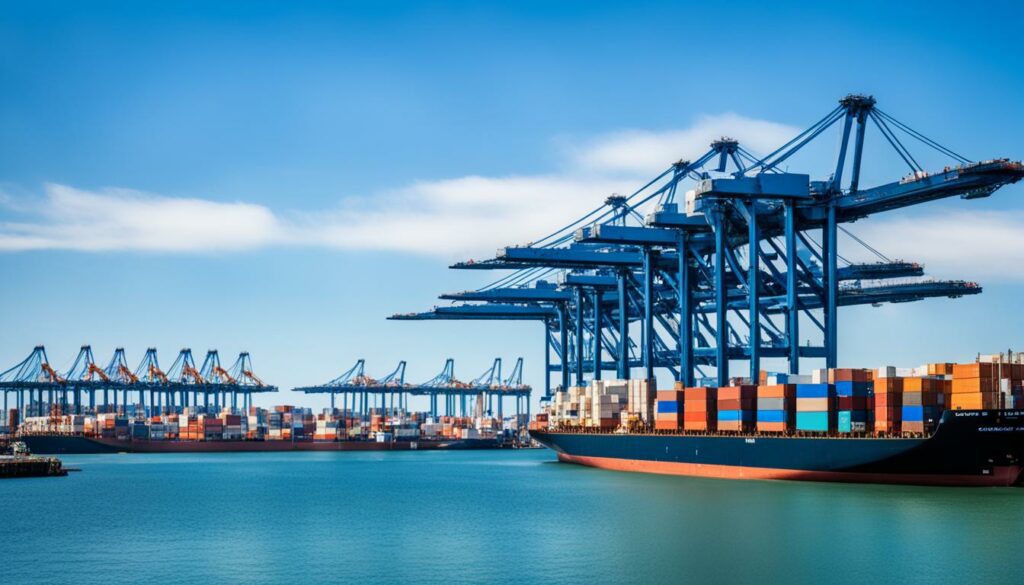
In conclusion, international trade is crucial for global economic and developmental growth. It does not just make economies more efficient but also fosters social progress worldwide.
Cultural exchange is key in improving our global understanding. It does this by encouraging us to speak with people from other cultures. This not only teaches us about other ways of life but also brings us together and helps the economy grow.
The JET Programme in Japan and the Fulbright Program in the United States help people talk across cultures. These programs share ideas and help people from different countries work together. They show how important it is to connect through cultural exchange.
Cultural exchange also boosts the economy. The U.S. makes about $200 billion each year from people visiting for culture. This helps build working relationships that grow the economy.
Cultural exchange introduces us to new viewpoints, making us more open to different cultures. This can make our society more welcoming and improve how countries work together. It also sparks new ideas and ways of doing things through collaboration.
It’s not just about money. Cultural exchange enriches education and makes us more aware of the world. It helps students become better at working with people from other countries. This prepares them for jobs worldwide.
| Benefits of Cultural Exchange | Statistics |
|---|---|
| Economic Impact | $200 billion per year from cultural tourism in the United States |
| Educational Enhancement | Exposure to diverse perspectives, critical thinking, and global awareness |
| Social and Cultural Benefits | Encourages tolerance, respect, and fosters global harmony |
In today’s fast-changing global market, using tech advancements is vital to stay ahead. This part looks at strategies that help businesses improve their supply chains and invest in R&D.
Using new tech in supply chains can make operations much better. Blockchain tech, for example, makes supply chains more open and trustworthy. This can lower fraud and errors, making international trading more reliable.
AI is also making a big difference. It’s great at forecasting market trends and making customer service and stocks better. North America highlighted AI’s value on April 11, 2024, in cutting down supply chain issues.
Spending on R&D helps create new things and keeps us top in trading worldwide. Businesses need to train their workers to use the latest tech well. This makes sure that new tools bring long-lasting competitive advantages.
Getting started with new tech might seem hard, especially for smaller companies. But, over time, R&D investments can bring more benefits. They help with making better decisions and have made it clear in a paper on February 15, 2024; the economy grows with new tech.
| Technology | Benefit | Application |
|---|---|---|
| AI | Efficiency improvement | Predicting market trends, automating support |
| Blockchain | Transparency and trust | Supply chain management |
| Automation and Robotics | Increased productivity | Manufacturing, warehousing, logistics |
In the end, using the latest tech and keeping up with R&D will help businesses do more than just survive. They’ll flourish in the ever-changing world of global trade.
Trade is a key factor in connecting the world. It creates bonds and mutual needs between nations. Over 25% of goods needed come from outside their region. This shows how deeply we rely on each other for various products.
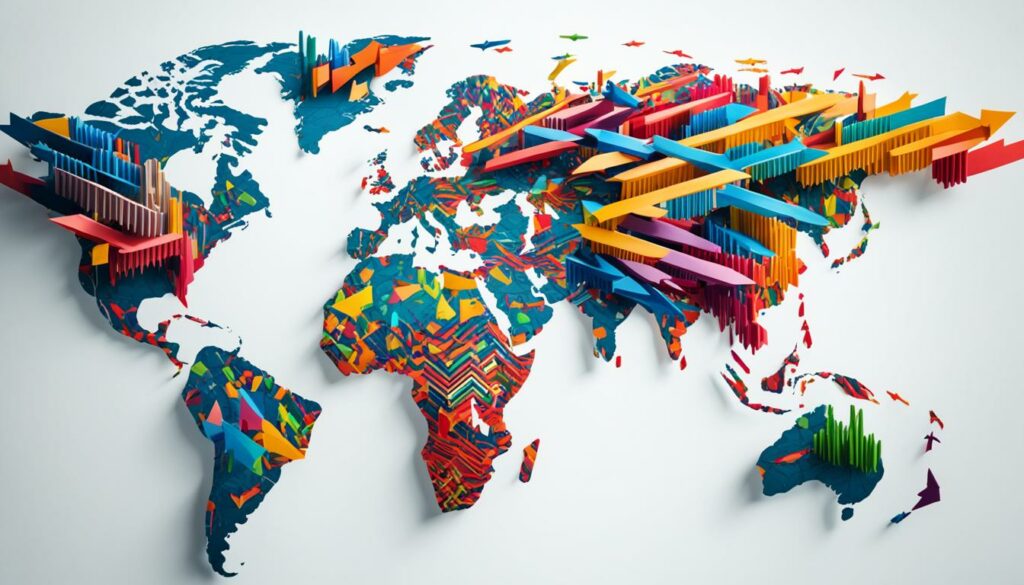
Trade agreements are crucial for the health and growth of world trade. They cover 30 different supply chains and look at over 6,000 products. These agreements are key in governing trade and improving economic bonds. Data flows, growing at nearly 50% each year, show their vital role in the modern world.
Good diplomatic relations are vital for international trade to thrive. They ensure the easy exchange of goods and capital. For example, the many trade connections in the Asia–Pacific region show the benefits of global trade. Europe 30 imports over half its energy, showing the importance of these ties.
| Statistic | Details |
|---|---|
| Manufactured Goods Trade | Reached a record high in 2021 despite supply chain disruptions. |
| Growth Drivers | Intangibles, services, and talent with services and intellectual property growing about twice as fast as goods. |
| Asia–Pacific Imports | More than 25% of its energy resource needs and critical intermediate goods. |
| Europe 30 Imports | Over 50% of its energy resource needs. |
| China’s Export Concentration | More than 60% in electronics and textiles sectors. |
To sum up, the deep connections created by trade and economic diplomacy show the world’s reliance on each other. This interaction is essential for a strong and linked global economy.
International trade lets businesses explore new foreign markets. A recent report by FedEx shows that most people think trading more makes money and creates jobs. When each country makes what it’s best at, businesses can find great chances to grow.
By last October, many countries saw their exports grow fast. This shows how getting into global markets is key. Knowing about international trade makes businesses better and helps them reach more customers.
Using technology is crucial for entering new markets. E-commerce makes it easy to sell to people all over the world. Agencies like the U.S Department of Commerce also offer help to businesses, making it simpler to trade with other countries.
In 2023, global trade might not grow as fast, but it’s still a good opportunity. This is what the World Trade Organization predicts. Most small business owners in the U.S see more trading with other countries as a good thing. Many think it will help their businesses grow.
To get into foreign markets, it’s important to understand local rules. Working with local partners and groups can help. They offer tips and make it easier to enter a new market smoothly.
Specialising in what you make best is key in global trade. It helps countries and businesses lower costs and find more chances to trade. By doing this, businesses can grow more, find new jobs, and boost the economy.
Becoming export-focused is a smart move for businesses that want to grow. By understanding and using global trade well, companies can find new chances to succeed. This makes them strong players in the world’s markets, not just their home country’s market.
Summing up, international trade brings amazing opportunities that are good for everyone. We have seen how the U.S. dealt with a big trade deficit in March 2024. It proves global trade has many moving parts.
By learning from historical trade stories, like the one from England and Portugal, we can grow. This growth comes from making the most of what each country does best.
Trade also makes the world economy bigger and lets more countries join in. When trade is easy and policies are good, it boosts investments and helps Gross Domestic Product (GDP) rise. But not everyone thinks free trade is best. Some countries use taxes and limits on trading to fix market problems.
Especially, trade has helped services grow in countries that were still developing. This shows working together globally is important. Things like support for trade, big talks between many countries, and focusing on new ways to trade are key.
To sum it all up, doing your homework on markets, making friends with other countries, and always finding new ways to trade is crucial. This way, companies and countries can make the most of global trade. They can grow and do well in the world market.
International trade ops help businesses grow. They let companies enter new markets. This can boost sales and lower risks from relying only on local sales.
Market research is key for spotting good trade chances. It checks out economic and cultural facts. This info guides businesses on how to enter and grow in new markets.
Economic signs show us if a market is good to join. Looking at things like GDP and inflation helps companies know if a market is stable and worth investing in.
Knowing what customers like helps businesses. They can make products and ads that people in other countries will love. This makes the brand more popular and trusted abroad.
Working with local partners has big benefits. It brings deep market insight and access to networks. This makes it easier to do business in a new place.
Making products fit local needs is very important. It involves changing the product, the way it looks, and its price to match what people there want. This makes the product more popular and keeps customers loyal.
Using social media and SEO can make a brand stand out online. It helps businesses connect with foreign customers better. This is by using online tools and tailoring messages to different cultures.
Using modern tech like e-commerce and AI is important. It makes operations smoother and enhances customer service. These tools give a business an edge over others in the world market.
Making friends with local experts helps a business follow rules better. It cuts down on legal risks. This makes entering new markets a smoother process.
Having resources from all over through trade makes economies stronger. It stops countries from depending too much on one resource. This way, they help each other more and do better together in business.
Trade helps nations do what they’re best at. This makes them more productive and creates jobs. It also improves roads and buildings, making life better for everyone.
Trade brings people from different backgrounds together. It helps us celebrate our differences and find common ground. This brings the world closer and makes us understand each other more.
Staying smart and using the latest tech is vital. It keeps a business leading in the market. This means always coming up with new ideas and using tech to get ahead.
Good trade deals and friendships grow global ties and wealth. They lay the groundwork for peace and prosperity between countries. This makes the world work together more closely.
Expanding through trade opens up big chances. It lets businesses grow worldwide and focus more on selling to other countries. This step can really boost their success beyond their home turf.